Today we are glad to present you our review of a tough cell phone with ruggedized protection: the i-Travel LM801 which came to our hands in a black-yellow casing. This is the third УrobustФ handset that we have ever tested in our lab. The previous were the Nokia 3720c and the Samsung B2710.
The phone comes in a black package box (Pic. 1). In the box, as well as the handset itself and its accessories youТll find one more useful device (Pic. 2). That is a manual battery charger, an indispensable thing for a hiker.
We are not going to pinpoint all the i-Travel LM801Тs advantages. We should only say that this phone offers a lot of features. It is powered by a 1300 mAh LI-Ion battery and equipped with the flashlight and the laser pointer.
The i-Travel LM801 is dust and water-splash resistant to IP54 standard. However, itТs far from being perfect. As it is stated on the official web site of the manufacturer the covering of the phone is done in a rubber and it should help the phone to survive falls even from 2 m (6.56 ft). So letТs live and weТll see.
The phone is colored with the black and yellow which is typical for reliable and solid phones today. The shape is a classic candy bar (Pic. 3-5). Although the battery is covered with the help of 6 screws, itТs very easy to release it.
As you can guess from the pictures, we are going to test the two i-Travel LM801 samples. Each of them will pass its own series of tests.
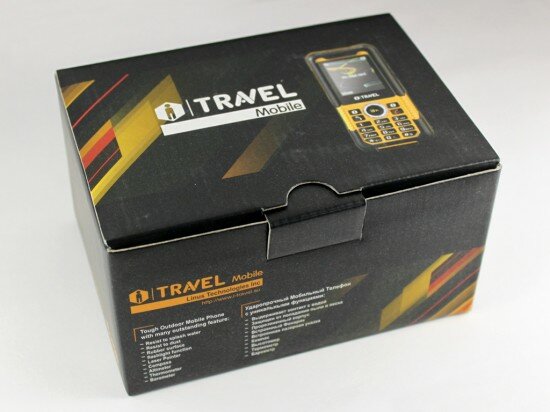
Pic. 1. Package box
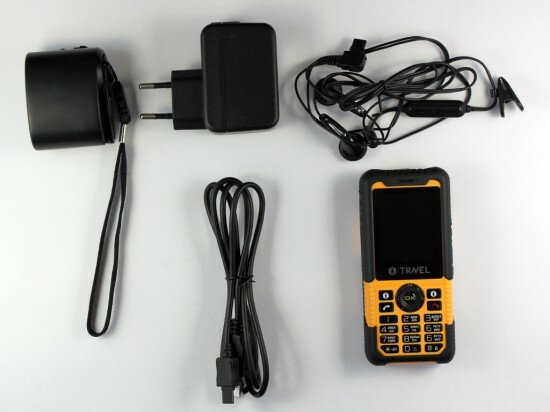
Pic. 2. Accessories
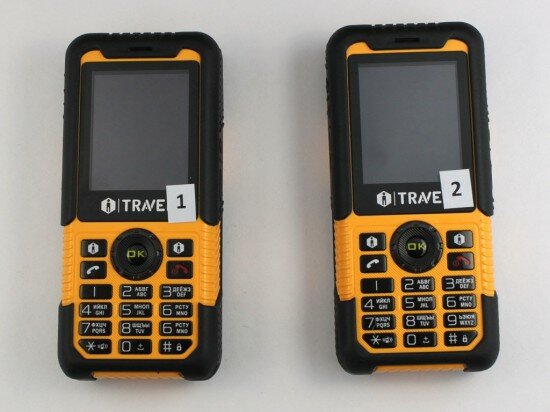
Pic. 3. The I-TRAVEL LM801Тs face
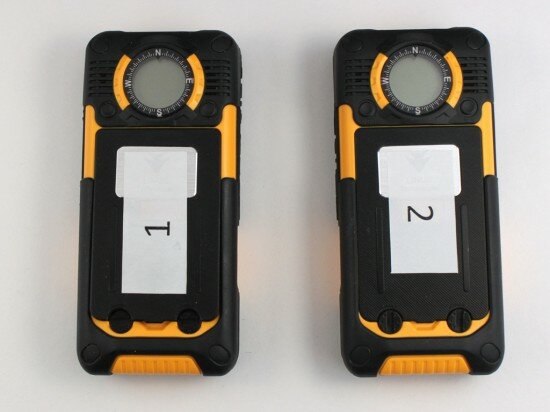
Pic. 4. The I-TRAVEL LM801Тs rear side
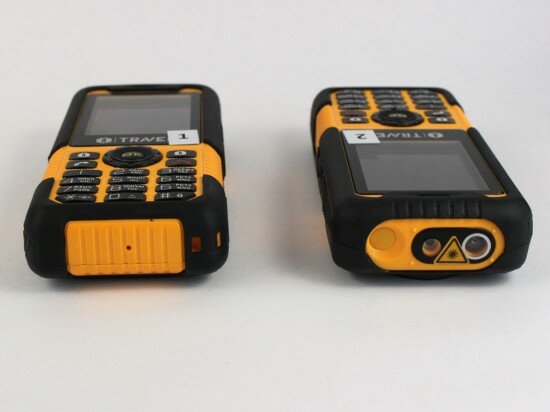
Pic. 5. The I-TRAVEL LM801Тs middle edges
The I-TRAVEL LM801 stress tests (sample 1)
1. Reception
The most important functions of a mobile phone are calling and reception. Call quality and reception are especially vital if you go camping to some remote place where the signal from towers is too weak. To check the i-TRAVELТs reception we performed the following test in three stages (video 1-3).
At first we placed the phone inside a cardboard box. Then we covered the box and the lid with foil (outside) and cut a 40 mm by 50 mm (1.57-inch by 1.97-inch) slot into the top of the lid. When we lidded the box with the phone inside this slot served as a УwindowФ through which the handset could receive the signal from a tower. The smaller the slot is, the weaker the signal. Then we made a call and found out that the signal reception fell only by 1-2 points. The i-TRAVEL received all incoming calls. At the second stage of the test we used a new lid with a 20 mm by 20 mm (0.787-inch by 0.787-inch) slot. The phone received all the calls with no problem. At last we cut a 15 mm by 15 mm (0.59-inch by 0.59-inch) slot into the top of the third lid and the handset showed fine results again.
Video 1. Reception quality (stage 1)
Video 2. Reception quality (stage 2)
Video 3. Reception quality (stage 3)
Grade (stage 1): 3 (with 3 being the highest possible grade)
Grade (stage 2): 3 (with 3 being the highest possible grade)
Grade (stage 3): 3 (with 3 being the highest possible grade)
2. Freeze test
Electronic gadgets usually show poorer performance in cold weather, compared to moderate temperatures. You can solve problems with your phoneТs software but the display and the battery will suffer a lot. In freezing temperatures all mobile phones malfunction to a greater or lesser extent.
In order to check the i-Travel LM801Тs performance in such an environment we placed the phone in a freezer and left it there in speaking mode for 2 hours. The temperature in the freezer was -15…-20 -T (5….-4 -F). As soon as we took the device out, the battery was already empty (video 4). The display malfunctioned greatly. The monochrome display (the second one) suffered even more. But the keyboard worked fine.
Video 4. Here’s how the phone looks like after the freeze test.
Grade: 2 (with 3 being the highest possible grade)
3. Short circuit of the battery charger
We started to perform the electrical tests with the short circuit the battery charger. We connected the terminals of the battery charger for a second thus producing a short circuit (video 5).
This didnТt break the battery charger.
Video 5. Short circuit of the battery charger
Grade: 3 (with 3 being the highest possible grade)
4. Short circuit of the battery
In this stress test we checked the reaction of the battery to a short circuit (video 6). The battery stayed functional and wasnТt even depleted.
Video 6. Short circuit of the battery
Grade: 3 (with 3 being the highest possible grade)
5. Charging the phone with incorrect voltage
In this test we discovered the minimum and maximum voltage rates which provide steady charging (video 7). Actually we plugged the regulated power supply into the outlet. Then we plugged one end of the battery charger in the regulated power supply and the other end to the phone and set the charging voltage at 5 V.
Then we started charging the i-Travel LM801 at a higher rate. We increased the voltage from 5 V to 8 V very slowly. When we were already close to this point the phone refused to charge (it stopped to consume current any more). Nevertheless the battery indicator on the phone’s screen showed that it was still charging! Despite this software bug, the circuit stayed fine because the consumption of the current was steady.
Video 7. Charging the phone at a higher rate
Grade: 3 (with 3 being the highest possible grade)
6. Providing the phone with incorrect power
To check how the i-Travel withstands an incorrect power supply we lifted the battery out of its compartment and connected the regulated power supply into the phone directly. Then we started to increase the power slowly trying to reach 7 V (video 8).
The results were quite fine. The consumption of current was steady during the whole test.
Video 8. Providing the phone with incorrect power
Grade: 3 (with 3 being the highest possible grade)
7. Leaving the cell phone out in the rain
To check the phoneТs water splash resistance we put it under the low-flow shower for 60 seconds (video 6).
ItТs so spectacular to watch these flows of water running on the phoneТs face, isnТt it? By the way, the device stayed absolutely safe. The USB port and the battery were dry (Pic. 6). Some water penetrated inside the stereo speakers but we dried them out with no problem. Soon the handset performed as fine as it did before the test.
Video 9. Simulation of leaving the i-Travel out in the rain

Pic. 6. The USB port was dry
Grade: 3 (with 3 being the highest possible grade)
8. Submerge to a shallow depth
The results of the previous test show that the i-Travel LM801 will survive if you leave it out in the heavy rain or put it under a running tap. But will it be functional after a full submersion? Watch video 10 and youТll know the answer.
Actually we dunked the phone under water for 20 seconds. The innards of the gadget stayed absolutely dry.
Do you remember the Nokia 3720 which is dust and water-splash resistant to IP54 standard too? We should say that the i-Travel is more water proof because there was no water in its ports and slots while the Nokia 3720Тs connectors were a little bit wet.
Video 10. Immersion in water
Grade: 3 (with 3 being the highest possible grade)
9. Submerge to a depth of one meter for 30 minutes
The previous test is nothing in comparison with what is to come for the i-Travel LM801 now. This time we submerged the phone to a depth of 1 m (3.28 feet) while in the previous test it was only 4 cm (1.57 inches) (video 11). Moreover, we kept the gadget under water for 30 minutes (video 12)!
At the very beginning of the experiment we noticed that water leaked under the screen glass which is at the back (Pic. 7, video 12). Soon the flashlight was activated though we didnТt touch the phone (Pic. 8). However, the handset received all incoming calls being under water with no problem.
After the test we examined the device (video 13). High water pressure did its job fine. We saw drops of water not only under the screen glass which is at the back of the phone but also under the main screen. The connectors also got wet. Some water penetrated even under the battery. Generally speaking, much water leaked into the inside of the phone. But the i-Travel stayed absolutely functional!
After the test we dried the phone for about 10 hours but we couldnТt completely get rid of the steam condensate and smudges in the corners of the screen. Anyway, the device worked fine.
We should say that IP54 standard doesn’t mean that the phone will be completely water proof. This standard only means that the phone can resist water splashes that attack it from different angles.
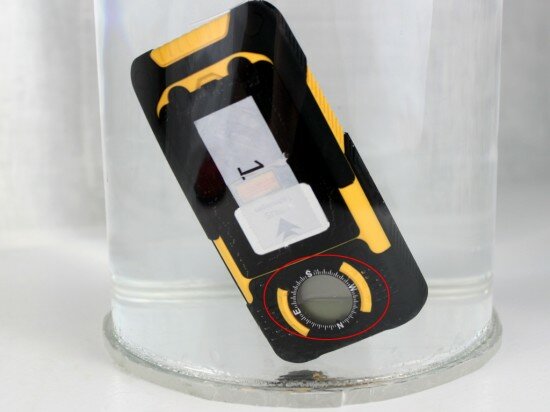
Pic. 7. Water under the screen glass
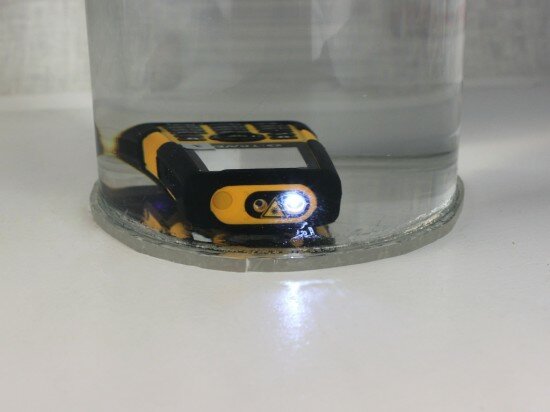
Pic. 8. This is how the flashlight was activated
Video 11. Thin glass tube filled with water
Video 12. Submerge to a depth of 100 cm (3.28 feet)
Video 13. HereТs how the phone looked like after the test
Grade: 2 (with 3 being the highest possible grade)
10. A full submerge to a depth of two meters
Only IPx7 waterproof cell phones are to put to this test.
Grade: –
11. Immersion in beer
We expected the i-Travel LM801 to show fine results in this test (video 14). We dunked the phone under beer for 10 seconds but the beer didnТt leak into the inside of the device. The handset stayed functional.
After the test we washed the phone and dried it out.
Video 14. Immersion in beer
Grade: 3 (with 3 being the highest possible grade)
12. Disassembling. Build quality
Disassembling is easy but it takes a little time. To release the battery cover we had to remove the six screws (Pic. 9). There is a steel frame inside the phone. The circuit board and the other components are attached to this frame (Pic. 10). At first glance the board sustained no water damage. But when we looked closer we noticed corrosion on some of the elements (Pic. 12). We lifted the display a little bit and found out that it was still wet (Pic. 13).
The build quality is quite fine for a low end device. The circuit board and all the other innards are neatly placed inside the body. The phoneТs processor is not very fast. It consumes little power. The engineers compounded the processor in order to prevent any damage. Most of the elements and the display are soldered to the circuit board. Those elements which are responsible for reception of calls are protected by the steel shield. Such design makes this phone a rugged and inexpensive device.
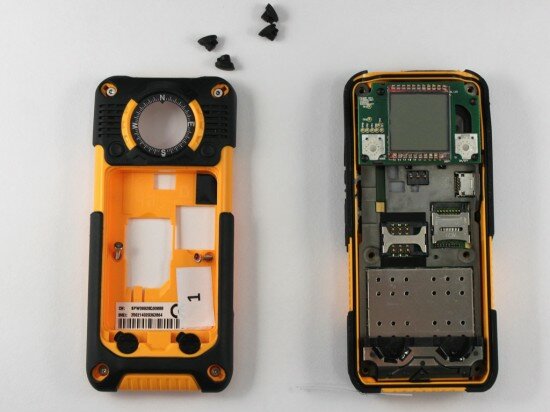
Pic. 9. The I-TRAVEL LM801 with the released battery cover
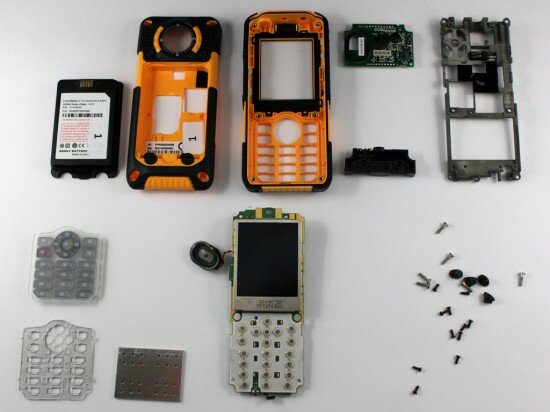
Pic. 10. The disassembled I-TRAVEL LM801
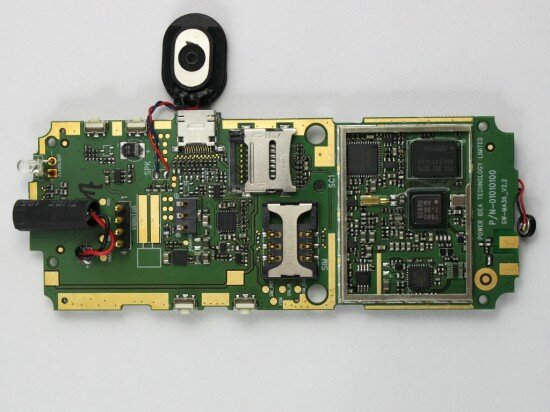
Pic. 11. The circuit board
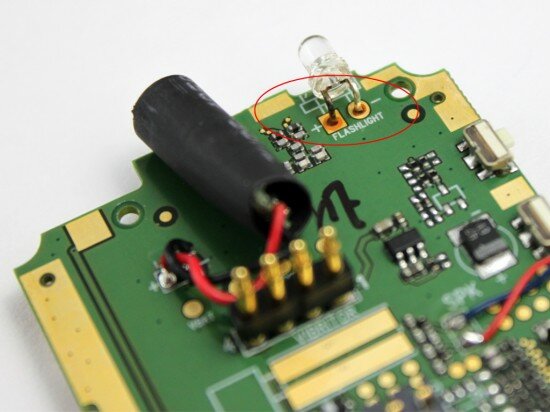
Pic. 12. Corrosion on the LED
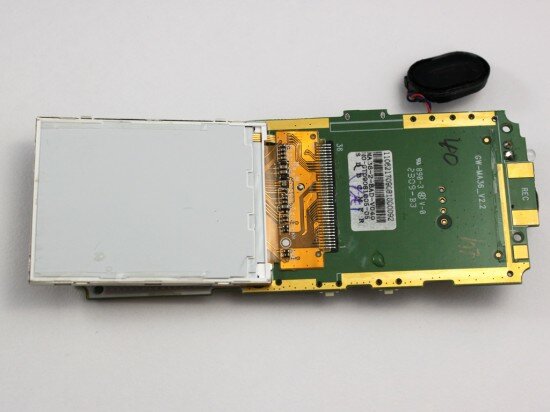
Pic. 13. Water under the display
Grade: 3 (with 3 being the highest possible grade)
13. Headphone cable testing (bending)
When you use your headphones while moving you bend the cable all the time. Infinite bending can damage the wires responsible for current supply. So your headphones may simply stop working. The wires are often broken near the jack or near the earbud-the most vulnerable places of all headphones.
We simulated infinite bending of the i-Travel LM801Тs headphone cable (video 15). This test was performed in three stages: 500, 650 and 800 bends respectively. The headphones sustained no damage and stayed functional.
Video 15. Bending of the headphone cable
Grade (stage 1): 3 (with 3 being the highest possible grade)
Grade (stage 2): 3 (with 3 being the highest possible grade)
Grade (stage 3): 3 (with 3 being the highest possible grade)
8. Headphone cable testing (static loads)
The tortures of the headphone cable are not finished. This time we tried to break the cord by hanging the three loads on it like people hang their clothes on the clothesline. Each of the loads weighed 1 kg (2.2 lbs) (video 16).
As you can see from the video, the cable showed no damage. The headphones worked with no problem after the test. It means that all the wires stayed safe.
Video 16. Headphone cable testing (static loads)
Grade (stage 1): 3 (with 3 being the highest possible grade)
Grade (stage 2): 3 (with 3 being the highest possible grade)
Grade (stage 3): 3 (with 3 being the highest possible grade)
The i-Travel LM801 stress tests (sample 2)
1. Cell phone’s reception
We couldn’t miss the chance to check reception of the two samples of the i-Travel LM801 and compare the results to make sure that both of them receive calls equally fine.
The conditions are absolutely the same. We placed the second phone inside the same cardboard box and used the same lids. The test was divided into three stages. The dimensions of the slots in every lid were the same as in the previous test. The results were also the same. However, at the third stage of the experiment the phone lost the cell signal for a moment. Then reception got better and the i-Travel received that call as well as all the others.
Video 17. Cell phone’s reception (the third stage of the test)
Grade (stage 1): 3 (with 3 being the highest possible grade)
Grade (stage 2): 3 (with 3 being the highest possible grade)
Grade (stage 3): 3 (with 3 being the highest possible grade)
2. Talk time
Sometimes mobile phone users have to buy additional batteries or non-standard cell batteries with greater capacities in order to increase talk time of their phones. But the majority of people choose the easiest way: they change their handsets for those with stronger batteries that provide more talk time.
The i-Travel LM801 is powered by a 1300 mAh LI-Ion battery. It has only 4 hours talk time. But we think that the manufacturer underestimated its own product. We discovered that the phone provides 17 (!) hours of talk time. We tried to prove it and set the phone to default, charged the battery and started calling. Our mobile network operator disconnected us each time after an hour of УtalkingФ. But we called again and again until the battery warned us that it was empty.
The result is amazing: the i-Travel LM801 can work 380 % longer than that is declared by the manufacturer.
Grade: 3 (with 3 being the highest possible grade)
3. Drops on the carpet
In this test we checked how the i-Travel was able to stand up to knocks and bumps. We successively dropped the phone on the carpet with each face, edge, and corner from 100 cm (3.28 ft), 150 cm (4.9 ft) and 200 cm (6.56 ft) (video 18-20).
We didnТt expect to see any damage because we believed what was stated on the official web site: Уthis handset is able to survive falls from 2 m (6.56 ft)Ф. However, the SIM card connection failed when the phone fell right from 2 m (probably the SIM card shifted when the phone hit against the floor). In order to fix the problem we had to lift the battery out of its compartment and put the SIM card in the right place. Then we dropped the device on the carpet with each of its edges. The flashlight was turned on for 2 times. Anyway, the phone sustained no visible damage and worked fine. So we didnТt lower the grade for the i-Travel in this test.
Video 18. Drops on the carpet from 100 cm (3.28 ft)
Video 19. Drops on the carpet from 150 cm (4.9 ft)
Video 20. Drops on the carpet from 200 cm (6.56 ft)
Grade (stage 1): 3 (with 3 being the highest possible grade)
Grade (stage 2): 3 (with 3 being the highest possible grade)
Grade (stage 3): 3 (with 3 being the highest possible grade)
4. Drops on the tile
This time we dropped the phone on the other type of flooring – glazed tile. But the heights of falls were decreased to 30 cm (11.8 inches), 50 cm (1.64 ft) and 100 cm (3.28 ft) respectively for each stage of the test (video 21-23).
The i-Travel LM801 showed much better results, compared to the drops on the carpet. We didnТt witness any problems with the SIM card and the flashlight like in the previous test.
Video 21. Drops on the tile from 30 cm (11.8 inches)
Video 22. Drops on the tile from 50 cm (1.64 ft)
Video 23. Drops on the tile from 100 cm (3.28 ft)
Grade (stage 1): 3 (with 3 being the highest possible grade)
Grade (stage 2): 3 (with 3 being the highest possible grade)
Grade (stage 3): 3 (with 3 being the highest possible grade)
5. Crushing the phone with a wooden bar
Even the appearance of the i-Travel speaks for itself. To damage this phone only by placing something heavy on it is not an easy task. So we can infer that this robust device will successfully pass this test.
Anyway we did our best in this experiment. We laid a wooden bar on the phone and applied pressure above the bar: 5 kg (11 lbs), 20 kg (44 lbs), 50 kg (110 lbs) in every stage respectively (Pic. 14). The handset was carefully examined afterwards. As a result of the test, the gadget stayed absolutely safe.
If you try to crush your i-Travel with a heavy wooden bar you’ll probably waste your time. YouТd better get it run over by Hummer if you want to stress test it.

Pic. 14. Crushing the phone with a wooden bar
Grade (stage 1): 3 (with 3 being the highest possible grade)
Grade (stage 2): 3 (with 3 being the highest possible grade)
Grade (stage 3): 3 (with 3 being the highest possible grade)
6. Breaking the cell phone in half (bending)
ItТs much easier to bend a thin cell phone than a thick one. The i-Travel LM801 consists of a steel frame that is placed inside the thick casing. Such design not only makes the phone look solid, it makes it really robust.
We put the i-Travel onto the two planks so that each edge of the phone lay on a single plank. Then we hitched a string with a 3 kg (6.6 lbs), 7 kg (15.4 lbs) and 15 kg (33 lbs) load respectively for every stage of the test. During the whole experiment we saw no bends at all (Pic 15).
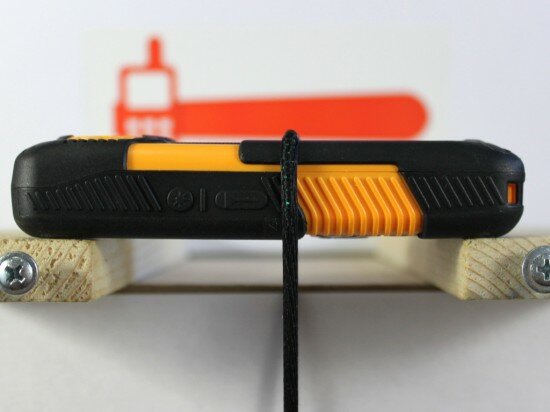
Pic. 15. Bend test (15 kg pressure)
Grade (stage 1): 3 (with 3 being the highest possible grade)
Grade (stage 2): 3 (with 3 being the highest possible grade)
Grade (stage 3): 3 (with 3 being the highest possible grade)
7. Keyboard
The keyboard works fine and it is very comfortable to use. Few ruggedized cell phones can boast such a good backlit dial pad where all the keys are easily recognized in the dark. The buttons on the sides of the phone and on the back are not backlit and donТt give an easy feeling while pressing. But this is normal for such a tough phone as the i-Travel. Some buttons are raised above the sides of the phoneТs body which is also not very convenient.
Grade: 3 (with 3 being the highest possible grade)
8. Dust test
Dust under a screen glass looks awful and irritates every mobile phone user. But there can be more serious problems if dust penetrates in the jack of your phone. In this test we placed the i-Travel LM801 in an enclosed tray containing dust. Then we successively made it vibrate viciously for 1, 3 and 6 minutes (video 24).
HereТs how the phone looked like after this test (Pic. 16). The headphone jack stayed clean due to the plastic lid (Pic. 17). We found no dust in the battery compartment (Pic. 18). At the end of the test the speakers got a little bit dirty but they continued to work properly. There was no dust under the phoneТs screen glass (Pic. 19). The keyboard also stayed functional. The space between the keys was clean.
Video 24. Dust test
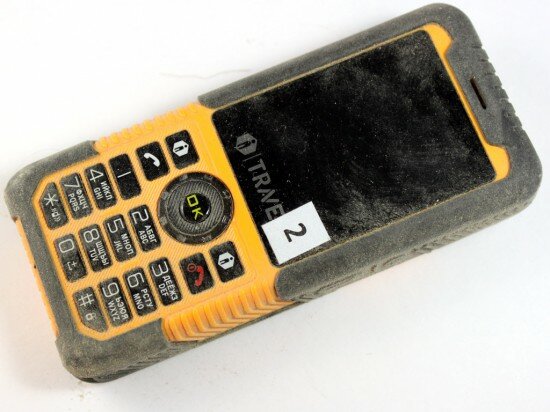
Pic. 16. HereТs how the phone looks like (stage 1)
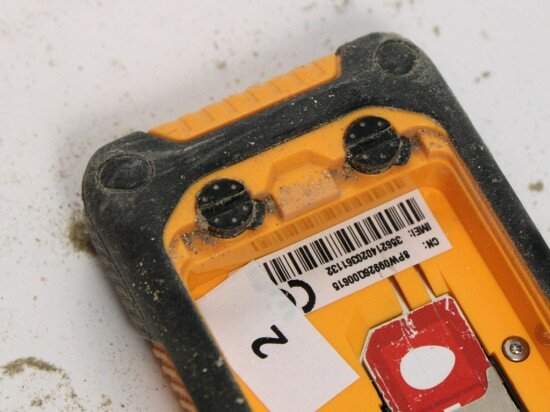
Pic. 17. The headphone jack stayed clean (stage 1)
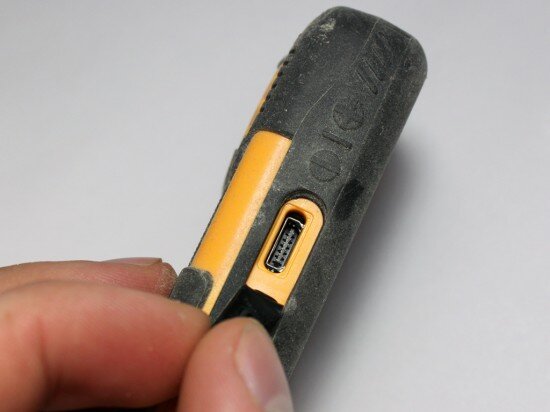
Pic. 18. The battery stayed clean (stage 2)
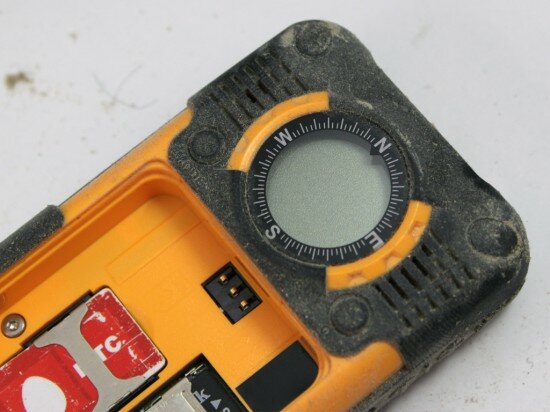
Pic. 19. Dust didnТt penetrate under the screen glass even at the end of the test
Grade (stage 1): 3 (with 3 being the highest possible grade)
Grade (stage 2): 2 (with 3 being the highest possible grade)
Grade (stage 3): 2 (with 3 being the highest possible grade)
9. Durability of the front panel
We placed the phone face down into the box that contained some plastic balls and made it vibrate in order to scuff the i-TravelТs front panel, screen and keyboard. This experiment was also divided into three stages: 5, 10 and 15 minutes.
After the test the phone showed no visible damage (Pic 20).
Video 25. Durability of the front panel
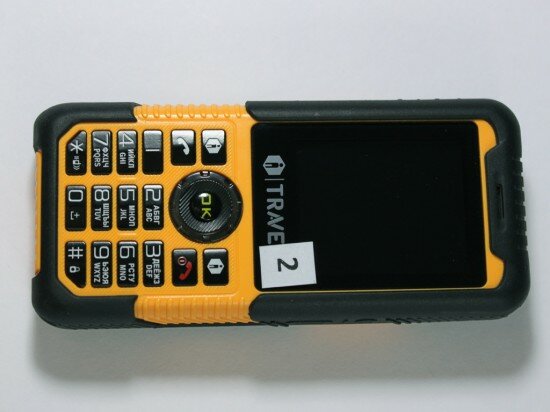
Pic. 20. No scuffs (stage 3)
Grade (stage 1): 3 (with 3 being the highest possible grade)
Grade (stage 2): 3 (with 3 being the highest possible grade)
Grade (stage 3): 3 (with 3 being the highest possible grade)
10. Simulation of carrying the phone in a pocket
This test is very similar to the previous one. But we made it tougher by placing the phone in a special drum together with the things that people are used to keep in their pockets such as keys and pennies. We successively rotated this drum with the phone inside (video 26) for 5, 10 and 20 minutes.
The phone suffered a lot even after the 5-minute rotation. The rubber cushions on the corners of the phone showed large scuffs and looked shiny. But before the test these cushions were matted (Pic. 21). The screen glass also sustained many small scratches (Pic. 22).
After the second stage of the test the rubberized covering was damaged even more seriously (Pic. 23). In the end the small dents appeared on the ribbed area of the back cover (Pic. 24). The scuffs and scratches on the screen ruined the picture (Pic. 25). The sticker on the middle edge came unstuck (Pic. 26).
The keyboard sustained no visible damage. The area of the phoneТs body colored with orange showed some small dents but they didnТt strike the eye very much and in general the phone stayed attractive.
Video 26. Simulation of carrying the phone in a pocket

Pic. 21. Scuffs on the rubber cushions (stage 1)
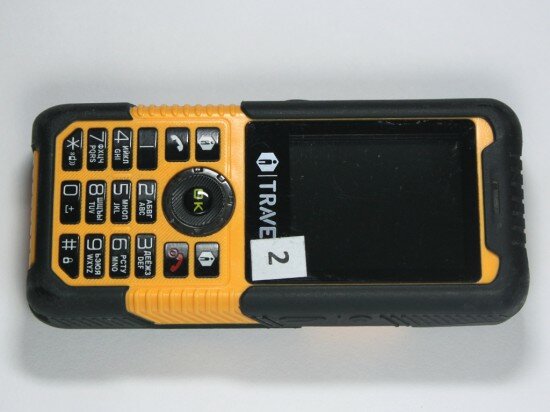
Pic. 22. Scuffs on the screen (stage 1)

Pic. 23. Scuffs on the edges of the phone (stage 2)
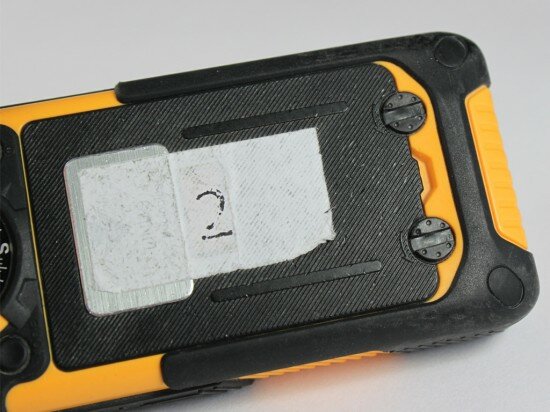
Pic. 24. The back cover (stage 3)
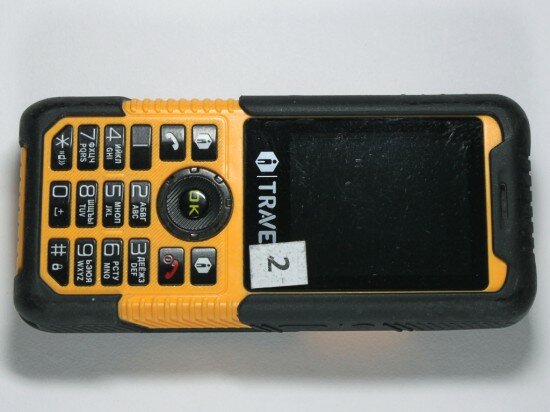
Pic. 25. Scuffs on the screen (stage 3)
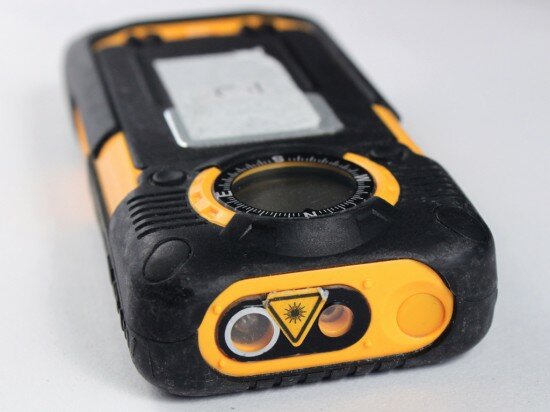
Pic. 26. The middle edge (stage 3)
Grade (stage 1): 2 (with 3 being the highest possible grade)
Grade (stage 2): 2 (with 3 being the highest possible grade)
Grade (stage 3): 2 (with 3 being the highest possible grade)
11. Scratch resistance of the screen
In order to check scratch resistance of the screen glass we scratched it with a nail for 3 times. We locked the nail in the machine that was specially devised for this test. Then we placed the phone under the sharp tip of the nail and applied pressure above the nail and thus above the phone. We ran the phone over the nail and scratched the screen. Each time we applied different force: 100 g (0.22 lbs), 300 g (0.66 lbs) and 600 g (1.3 lbs) (video 25-27).
When we scratched the screen for the first time it sustained no visible damage (Pic. 27). Our next attempt was more effective: we made a visible scratch. But it wasn’t as deep as wanted it to be. So we applied 600 g (1.3 lbs) pressure and the phone took quite a deep scratch in the screen. As a result, we have two visible scratches on the screen glass that seemed much bigger when we switched on the phone and turned on the screen (Pic. 28).
Video 27. Scratching the screen at the force of 100 g (0.22 lbs)
Video 28. Scratching the screen at the force of 300 (0.66 lbs)
Video 29. Scratching the screen at the force of 600 (1.3 lbs)
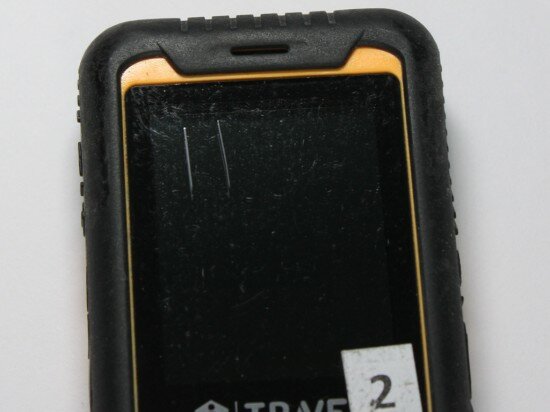
¦iё. 27. Scratches on the screen
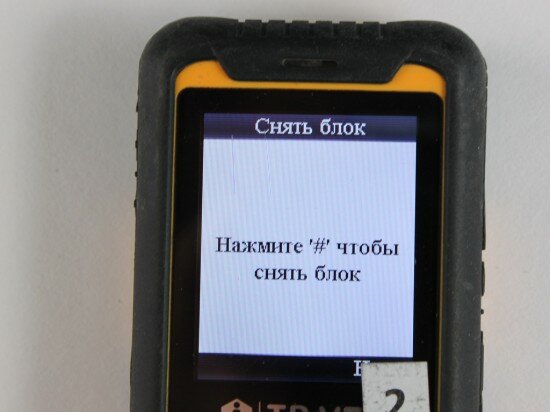
¦iё. 28. Here
Grade (stage 1): 3 (with 3 being the highest possible grade)
Grade (stage 2): 2 (with 3 being the highest possible grade)
Grade (stage 3): 2 (with 3 being the highest possible grade)
12. Scratch resistance of the back panel
The conditions of the back panel scratching were the same as for the screen.
The first scratch was almost invisible. The other two were deeper (Pic. 29, video 30-32).
Video 30. Scratching the back panel at the force of 100 g (0.22 lbs)
Video 31. Scratching the back panel at the force of 300 (0.66 lbs)
Video 32. Scratching the back panel at the force of 600 (1.3 lbs)
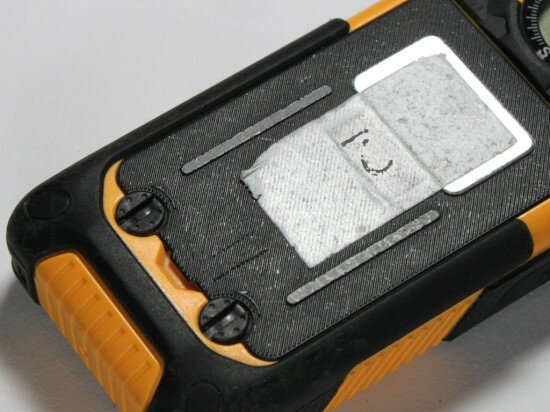
Pic. 29. Scratches on the back panel
Grade (stage 1): 3 (with 3 being the highest possible grade)
Grade (stage 2): 2 (with 3 being the highest possible grade)
Grade (stage 3): 2 (with 3 being the highest possible grade)
13. The screen’s robustness-breaking the screen glass
As you can guess from the previous tests, the i-Travel LM801 has a simple screen glass. The phone is robust but you can easily break the glass and the display.
In this test we dropped a steel sphere on the screen from 10 cm (3.9 inches), 15 cm (5.9 inches) and from 25 cm (9.8 inches) (video 33). The diameter of the sphere is 22 mm (0.86 inches).
The screen glass survived all our attacks. It sustained neither cracks nor other damage.
Video 33. Breaking the screen glass
Grade (stage 1): 3 (with 3 being the highest possible grade)
Grade (stage 2): 3 (with 3 being the highest possible grade)
Grade (stage 3): 3 (with 3 being the highest possible grade)
14. Heat test
In this test we simulated the phone’s exposure to the sun or leaving the handset near an open fire. We placed the handset and the light bulb (40 Wt) in a small can and kept it there for the periods of 3, 5 and 10 minutes (video 34, 35).
We examined the i-Travel after every stage of the test. The phone sustained no visible damage after 8 minutes of heating. But during the third test the temperature of the device rose to 118 -T (244.4 -F). The display became dim and the screen glass showed tiny cracks (Pic. 30).
Video 34. Heating for 3 minutes
Video 35. Heating for 10 minutes
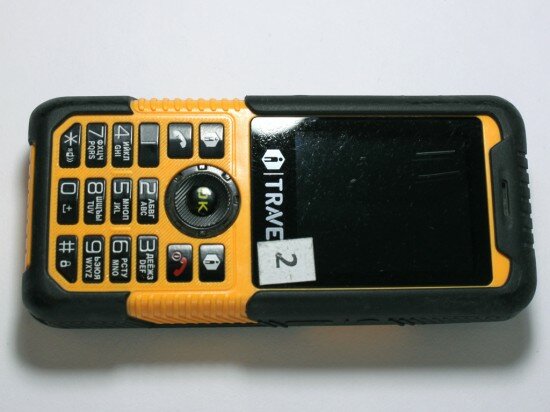
Pic. 30. Tiny cracks on the screen glass
Grade (stage 1): 3 (with 3 being the highest possible grade)
Grade (stage 2): 3 (with 3 being the highest possible grade)
Grade (stage 3): 3 (with 3 being the highest possible grade)
15. Cell phone smash
We tried to smash the i-Travel LM801 by dropping it on the tile from greater heights, compared to the classic drop test: 150 cm (4.9 ft), 200 cm (6.56 ft) and 240 cm (7.87 ft) (video 36-38).
The phone survived the drops from 150 cm (4.9 ft). When we started to drop it with its face down from 200 cm (6.56 ft) and 240 cm (7.87 ft) the protective compass glass fell off many times. At the end of the test the handset switched itself off. Fortunately, we turned it on with no problem and it worked fine afterwards.
Video 36. Drops on the tile from 150 cm (4.9 ft)
Video 37. Drops on the tile from 200 cm (6.56 ft)
Video 38. Drops on the tile from 240 cm (7.87 ft)
Grade (stage 1): 3 (with 3 being the highest possible grade)
Grade (stage 2): 2 (with 3 being the highest possible grade)
Grade (stage 3): 2 (with 3 being the highest possible grade)
16. Disassembling. Build quality
Disassembling of the second sample didn’t tell much about it. Both handsets are identical. Both of them proved to be dust resistant. In one of the tests we put this device in the tray that was full of dust and shook it violently. But there wasn’t even a grain of dust inside the phone.
An interesting fact: at the top of the phone (the area near the flashlight and the laser pointer) thereТs a rubber lid. At first we couldn’t understand why it was there but when we took the phone completely apart we guessed that that this lid covered the slot designed specially for an additional antenna. But the engineers decided not to include the antenna into the phone and closed the slot with this lid.
Grade: 3 (with 3 being the highest possible grade)
All in all, the i-Travel LM801 gains 655 point (with 702 being the highest possible grade)
Final words
Summing up the results of the i-Travel LM801 stress tests we should say that this low end device was planned as water-splash and dust resistant cell phone. And this helped it to show fine results in almost all the tests. However, the IP54 standard doesnТt provide the phone with all types of protection.
As a result, the back cover and the rubber cushions on the corners of the gadget sustained many scuffs and dents. It tells everything about the quality of the material of which the phone is made.
The screen glass is the i-TravelТs weakest point. ItТs not better than the screens of the handsets that donТt have any ruggedized protection. ItТs actually the same.
In this respect The Samsung B2710 stands out against all the mobile phones that we have ever tested. It is IP-67 certified which provides better protection than IP54. This device is also equipped with a scratch resistant protective screen glass which makes it even more rugged.
We can also compare the i-Travel LM801 with the Nokia 3720c which is IP54 certified too. As for dust resistance the i-Travel is better. The battery cover and the plastic lid did their job perfectly. The keyboard of the i-Travel is more reliable and comfortable than that of the Nokia 3720c. It can work with no problem in hot and cold weather. ItТs also very difficult to bend and crush the i-Travel due to the thick shape of this phone.
By the way, this mobile device has lots of variable functions that you wonТt find in any other cell phone.
HereТs how both samples look like after the tests (Pic. 31 – 34, video 39).
Video 39. HereТs how both samples look like after the tests.
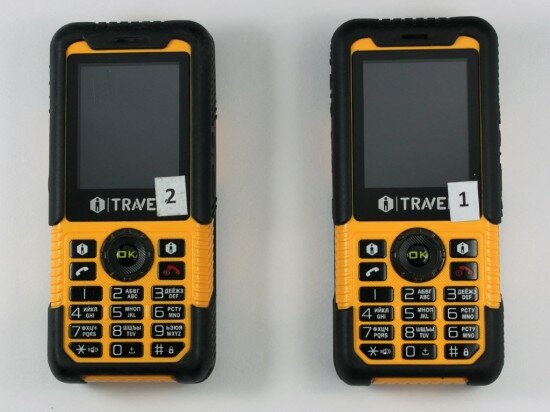
Pic. 31. HereТs how both samples look like after the tests (the front panels)
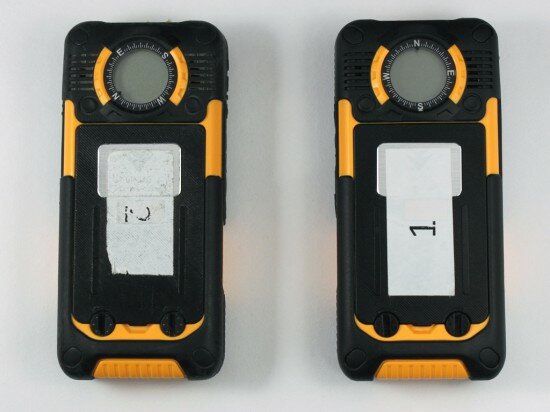
Pic. 32. HereТs how both samples look like after the tests (the rear panels)
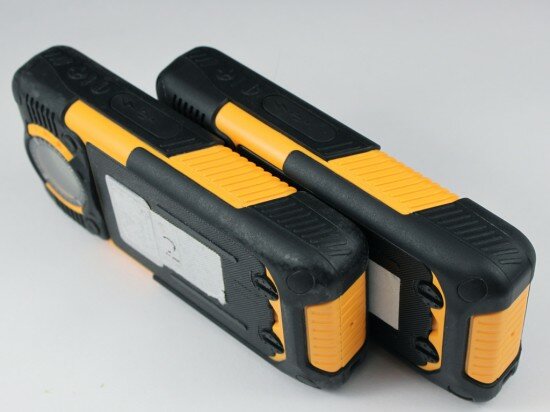
Pic. 33. HereТs how the bottom of the phones look like after the tests
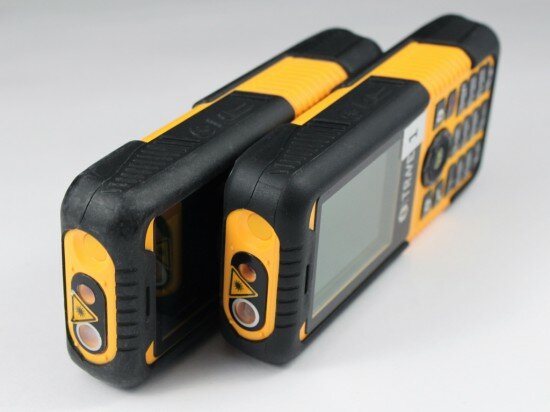
Pic. 34. HereТs how the bottom of the phones look like after the tests

 Russian version
Russian version
Trackback/Pingback (1)
[...] phones (not shock proof) passed this experiment with no problem. To compare the i-Travel LM121B and the i-TRAVEL LM801 we should say that the former is more water resistant. At the same time the latter showed better [...]